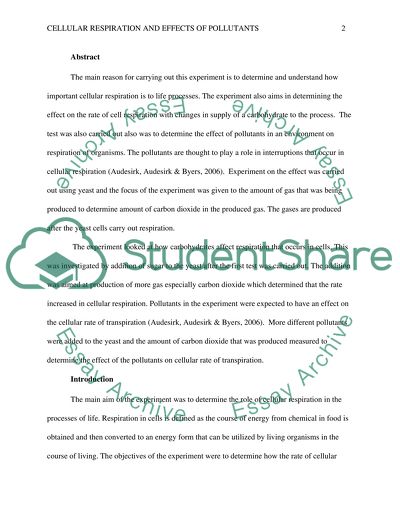Cite this document
(“Molecules and Processes of Life Activity 6 - Cellular Respiration and Lab Report - 1”, n.d.)
Retrieved from https://studentshare.org/environmental-studies/1684064-molecules-and-processes-of-life-activity-6-cellular-respiration-and-the-effects-of-pollutants-on-its-rate
Retrieved from https://studentshare.org/environmental-studies/1684064-molecules-and-processes-of-life-activity-6-cellular-respiration-and-the-effects-of-pollutants-on-its-rate
(Molecules and Processes of Life Activity 6 - Cellular Respiration and Lab Report - 1)
https://studentshare.org/environmental-studies/1684064-molecules-and-processes-of-life-activity-6-cellular-respiration-and-the-effects-of-pollutants-on-its-rate.
https://studentshare.org/environmental-studies/1684064-molecules-and-processes-of-life-activity-6-cellular-respiration-and-the-effects-of-pollutants-on-its-rate.
“Molecules and Processes of Life Activity 6 - Cellular Respiration and Lab Report - 1”, n.d. https://studentshare.org/environmental-studies/1684064-molecules-and-processes-of-life-activity-6-cellular-respiration-and-the-effects-of-pollutants-on-its-rate.


